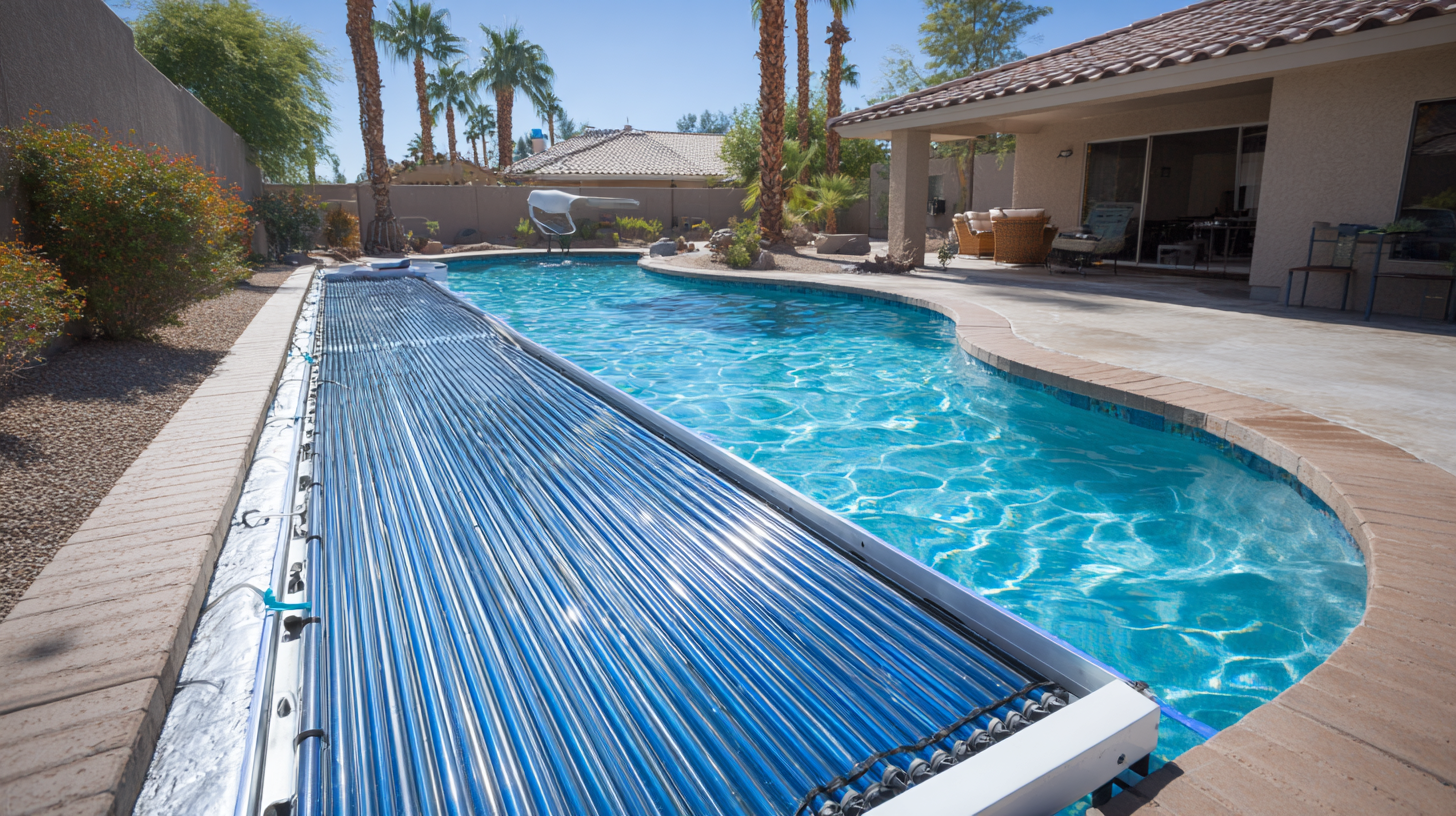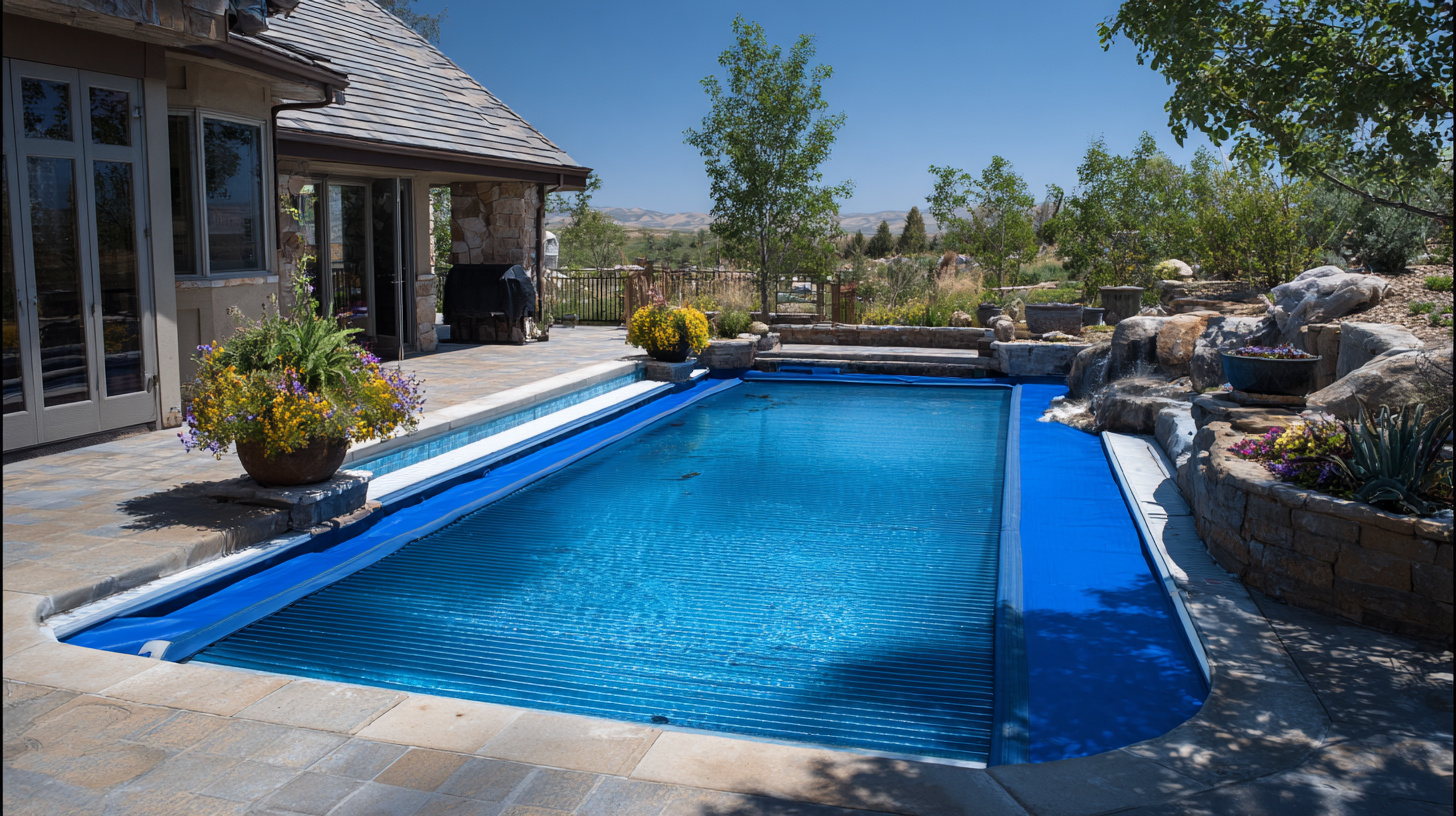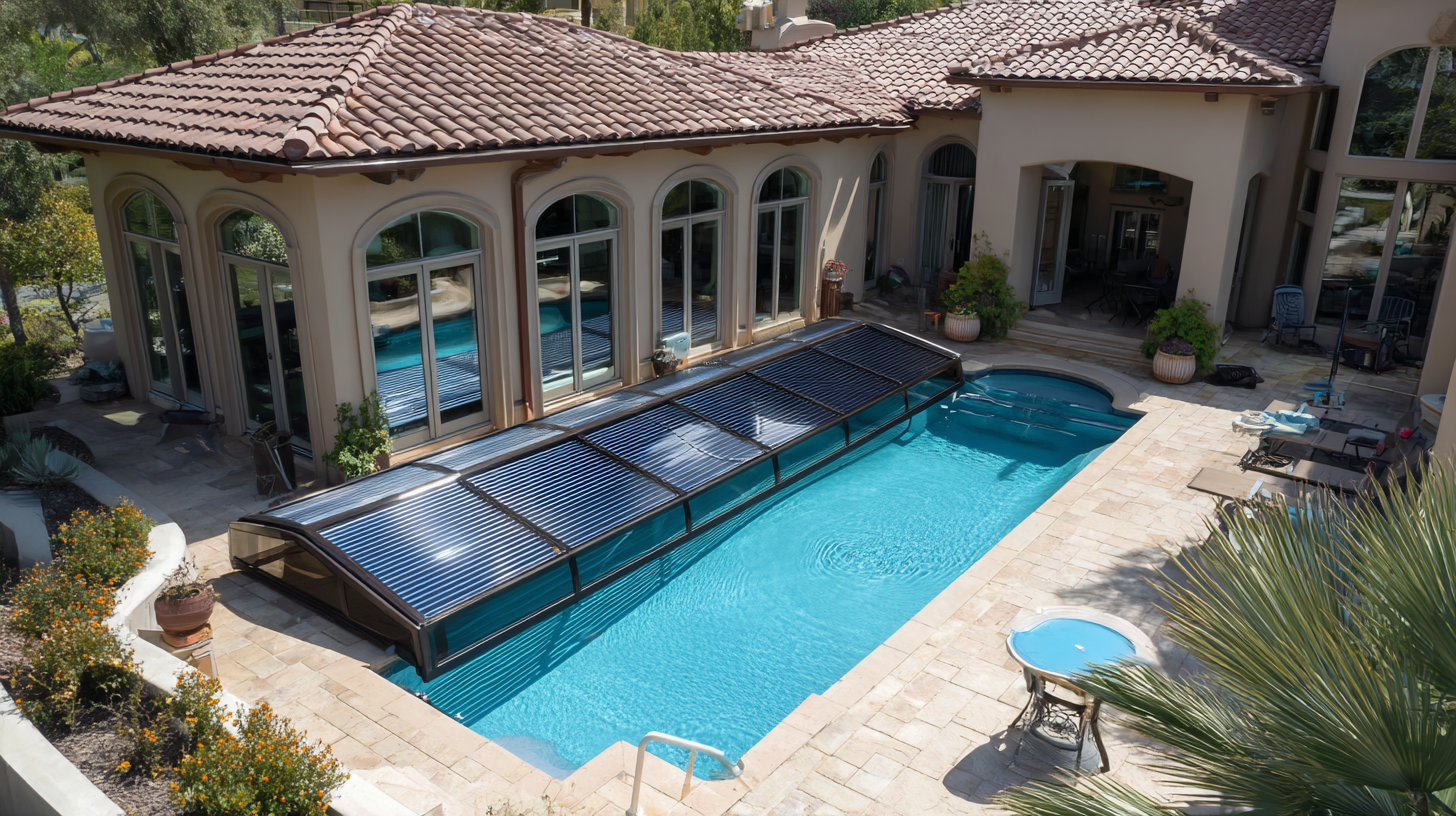What to Look for in the Best Solar Pool Heating System: A Comprehensive Guide
In recent years, the growing interest in sustainable energy solutions has propelled the solar pool heating system into the spotlight, as homeowners seek efficient ways to extend their swimming season while minimizing environmental impact. According to the U.S. Department of Energy, solar pool heaters can be up to 70% more energy-efficient than traditional gas heaters, significantly reducing both operational costs and carbon footprints. Moreover, a report by the Solar Energy Industries Association reveals that the market for solar heating solutions is expected to grow by over 20% in the next five years, indicating a robust shift towards greener alternatives in leisure activities. As such, choosing the right solar pool heating system becomes crucial for maximizing performance and enjoyment. This guide aims to equip you with the essential knowledge needed to select an optimal system tailored to your needs and environmental goals.

Key Features of High-Quality Solar Pool Heating Systems from Chinese Manufacturers
When choosing a solar pool heating system, it’s vital to understand the unique characteristics that differentiate high-quality products, especially from reputable Chinese manufacturers. One key feature to look for is the materials used in the construction of the solar collectors. Premium systems often utilize UV-resistant polymers that can withstand prolonged exposure to sunlight and harsh chemicals, ensuring durability and longevity.
Another important aspect is the efficiency of the heat exchange. Look for systems with larger surface areas on the collectors, as well as designs that maximize water flow to enhance heat transfer. This means you can enjoy warmer pool temperatures without consuming excessive energy.
**Tips:** Always check for warranties and certifications, which can indicate reliability and performance. Additionally, research the manufacturer's reputation—those with a history of positive customer feedback and robust after-sales support are often more trustworthy. Furthermore, consider the ease of installation and maintenance; systems designed for simplicity can save you time and effort in the long run.
Comparing Different Solar Pool Heating Technologies for Optimal Performance
 When considering solar pool heating technologies, it's essential to compare the available options to determine which system delivers optimal performance for your specific needs. There are primarily three types of solar pool heating systems: flat plate collectors, evacuated tube collectors, and solar liquid heating systems. According to the Solar Energy Industries Association (SEIA), flat plate arrays are the most common choice for residential pools due to their cost-effectiveness and ease of installation, providing an average efficiency of 70% in sunny climates.
When considering solar pool heating technologies, it's essential to compare the available options to determine which system delivers optimal performance for your specific needs. There are primarily three types of solar pool heating systems: flat plate collectors, evacuated tube collectors, and solar liquid heating systems. According to the Solar Energy Industries Association (SEIA), flat plate arrays are the most common choice for residential pools due to their cost-effectiveness and ease of installation, providing an average efficiency of 70% in sunny climates.
Evacuated tube collectors, while more expensive, offer superior performance in cooler temperatures and low-light conditions. A report from the National Renewable Energy Laboratory (NREL) indicates these systems can achieve efficiency rates upwards of 90%, making them ideal for regions with extended cloudy seasons. Additionally, solar liquid heating systems combine solar panels and a fluid transfer mechanism, which can optimize heat distribution and retention. Data from energy efficiency studies suggests that using these systems can extend the swimming season by up to three months, providing significant value for homeowners looking to maximize their investment in solar technology.
Understanding Installation Requirements for Solar Pool Heating Systems
When considering a solar pool heating system, understanding the installation requirements is crucial for achieving optimal performance. First, it's essential to assess your roof's characteristics, as the orientation and angle significantly impact solar panel efficiency. Ideally, a south-facing roof with a pitch of 30 to 45 degrees is most effective, but slight variations can still yield good results. Moreover, ensure your roof can support the weight of the solar panels and that there are no obstructions like chimneys or trees that could cast shadows on the system.
In addition to roof considerations, plumbing and electrical installations must comply with local building codes and regulations. The system typically requires a dedicated circulation pump and piping that connects the pool and solar panels. It's advisable to choose high-quality materials to enhance durability and efficiency. If you're not familiar with local codes, consulting with a professional installer can ensure that your system is compliant and will operate effectively, maximizing your investment in solar energy for your pool.
Cost Analysis: Investing in the Best Solar Pool Heating Solutions
When considering a solar pool heating system, a key aspect to evaluate is the overall cost and return on investment. The integration of solar technology in residential settings has shown promising financial benefits, especially when approached with a strategic mindset. Recent analyses highlight that proper planning and implementation can lead to significant energy savings and a relatively quick payback period. Homeowners keen on maximizing their budget should weigh initial installation expenses against long-term utility savings, ensuring that their investment aligns with their energy consumption patterns and local incentives.
Additionally, the evolving landscape of renewable energy offers various financial incentives that can further reduce costs. For instance, regions are increasingly providing tax credits, rebates, and net metering options for solar energy systems. As the demand for renewable energy grows, more consumers are turning towards solar pool heating solutions, viewing them not only as eco-friendly alternatives but also as smart financial investments. Exploring such options provides a deeper understanding of how solar heating systems can be leveraged effectively, paving the way for a sustainable and cost-efficient future.
What to Look for in the Best Solar Pool Heating System: A Comprehensive Guide - Cost Analysis
| Feature | Importance Level | Average Cost (USD) | Installation Time (Hours) | Lifespan (Years) |
|---|---|---|---|---|
| Thermal Efficiency | High | 3000 | 8-12 | 15-20 |
| Material Quality | Very High | 3500 | 10-15 | 20-25 |
| Ease of Installation | Medium | 2000 | 4-6 | 15-20 |
| Maintenance Requirements | Low | 1000 | 2-3 | 10-15 |
| Return on Investment (ROI) | Very High | Variable | N/A | N/A |
Maintenance Tips for Ensuring Longevity of Your Solar Pool Heating System
When investing in a solar pool heating system, ensuring its longevity through proper maintenance is crucial. Regularly checking the system for any signs of wear or damage can prevent costly repairs down the line. Make it a habit to clean the solar collectors and check for debris that may block sunlight, as optimal exposure is key to efficient heating.
It's also advisable to inspect the plumbing connections for leaks and ensure that all hoses and fittings are secure. Utilizing a pH balancing system can help maintain water quality, which directly affects the performance of your solar pool heater. Additionally, during the off-season, consider draining the system to avoid potential freezing damage, especially in colder climates.
Routine maintenance checks paired with these simple tips can significantly extend the life of your solar pool heating system, ensuring you get the most out of your investment. Proper care not only enhances efficiency but also keeps your pool enjoyable year-round.
